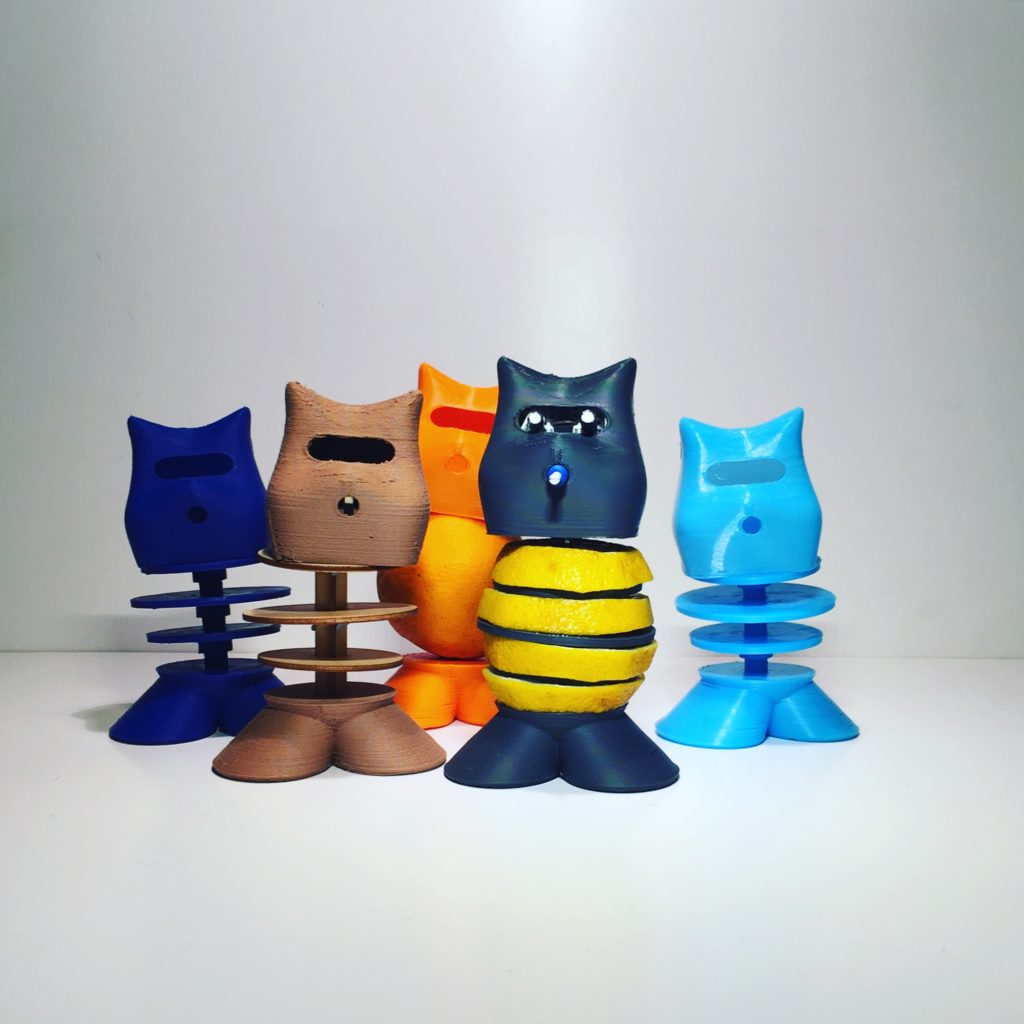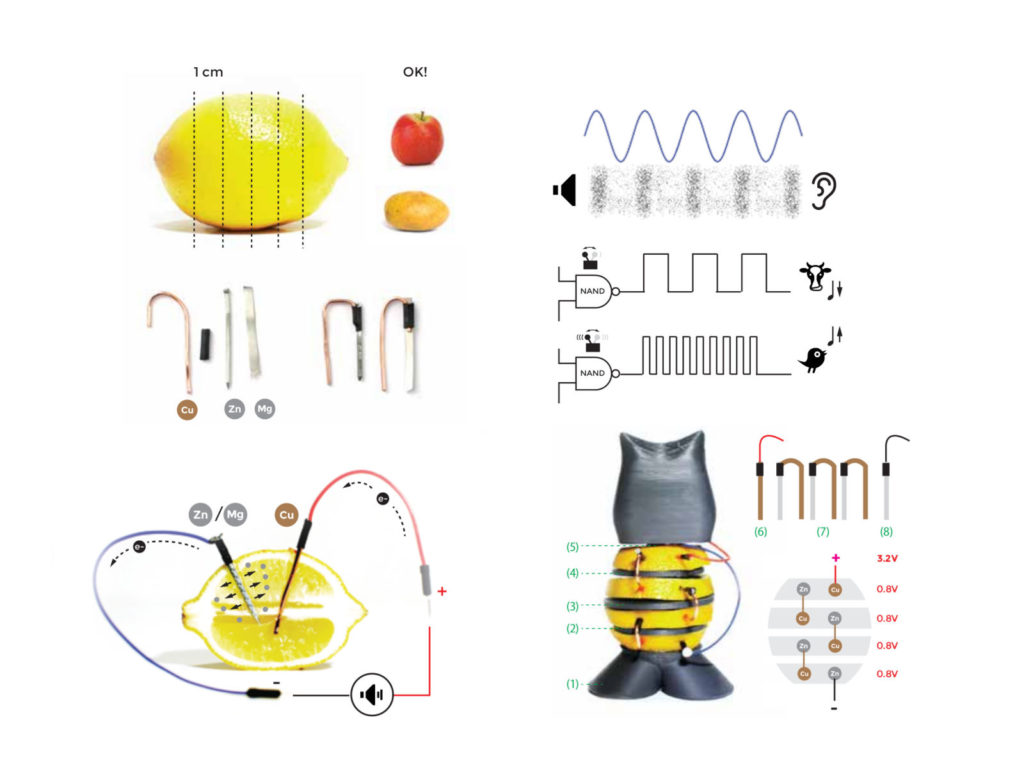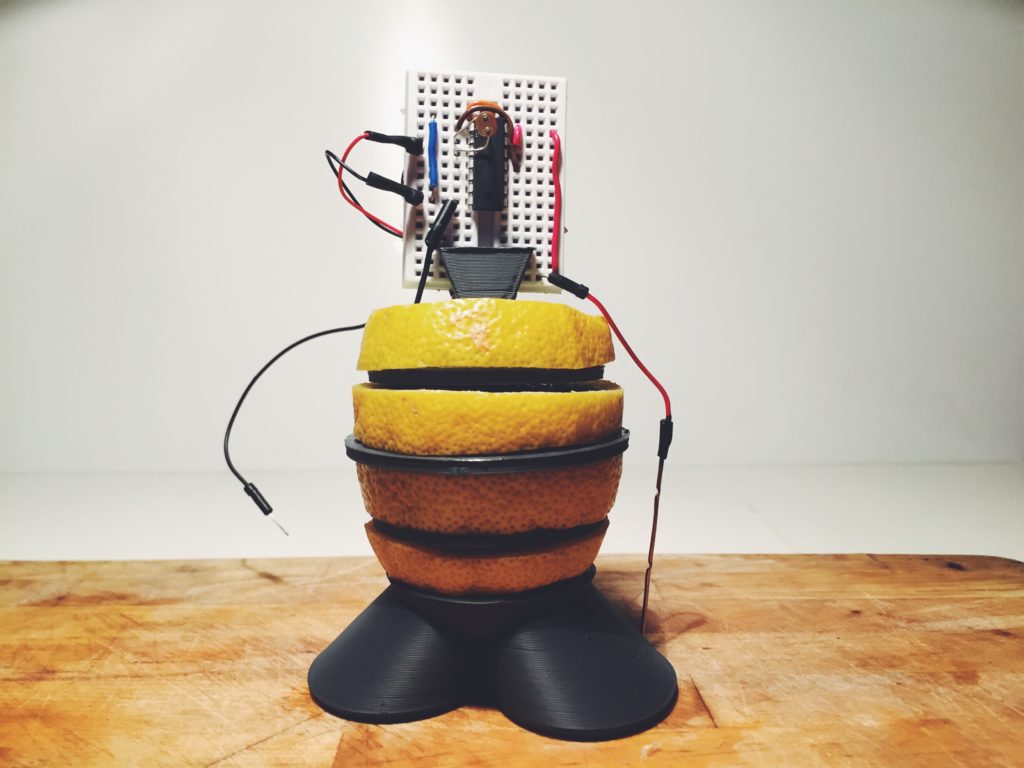Lemonster
Educational Science Kit
- At: National Taiwan Science Education Center, Taipei
- By: Tuomo Tammenpää
- For: Dimension Plus, Taiwan / ITRI-Taiwan
- In: September 2014
Lemonster is an educational DIY science-kit in the shape of a creature. It introduces the basics of two physical phenomenons 1) generating electricity with electrolysis and 2) synthesising square wave electronic sound. Lemonster is a plastic or plywood “skeleton” holding together a slices of fruit or vegetable, which are connected together with pieces of copper and zinc/magnesium, generating bit of electric chrage from electrolysis of metals and the fruit acid, to power a simple sound circuit on small breadboard. Lemonster parts can be 3D printed or laser cut and the electronic components are inexpensive, robust components, suitable for tinkering for all ages.

Electrolysis
Electrolysis is a way of creating electric charge with two different metals in acidic liquid. A simple way of experimenting with this is to push copper coin and a zinc nail in to a lemon and measuring the voltage between them. The electrons from the nail dissolve in the the citric acid of the lemon and move to the copper penny, which attracts more electrons. This movement of electrons creates small electric charge. So the electricity comes from the two different metals working as electrodes where the lemon juice inside the lemon work as the electrolyte. Very small amount of hydrogen gas is also released in the process.
In Lemonster, one lemon is cut to four slices and a copper wire & and a zinc nails are inserted in on each of the slices. All slices are connected in series, so it adds up to four times more charge than with one pair of electrodes in the whole lemon. This gives the sound circuit the 3-4 volts it needs to make some sounds.

Electronic sound synthesis
Sound is energy of vibrations. When the small metal plate in the piezo element in the Lemonster sound circuit vibrates, it moves the air around it and makes sound waves. These waves of air vibrations we can hear as sound in our ears. The sound circuit itself has only very few components: the integrated circuit the NANDgate that works as a very quick switch (on&off / high&low), few capacitors that charge and discharge electricity (like a small but very fast battery), some resistors (light resistor and potentiometer) that slows and speeds up the switching and the piezo speaker, that turns the electric signal to audible frequencies. Lemonster uses two of the four gates, and the first gate controls the second gate making a rhythmic pulse for the pitch from the second gate. The rhythm is controlled by the potentiometer in the Lemonsters nose, and the pitch is controlled by the light resistor between its eyes.

Lemonster was developed for Prototyping Factory workshops in Taiwan National Science Education Center, hosted by Dimension+ in Taipei, Taiwan October 2015. Lemonster would have not been possible without dedicated help by Dimension+ team: Escher Tsai, I-chern Lai, Darry Dai, Lanli chen, Yinnu Chen and master-workshopologist Marc Dusseiller]